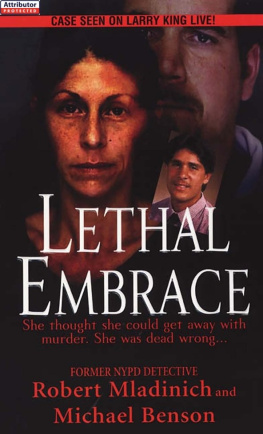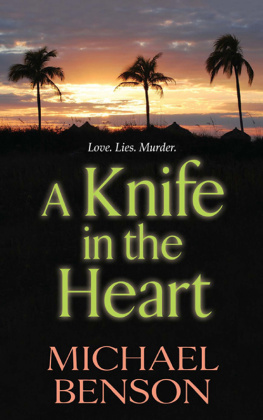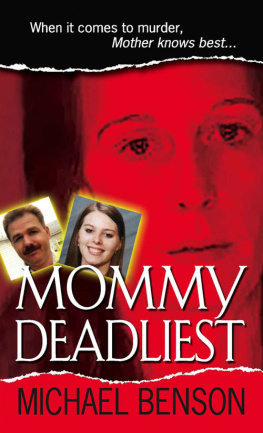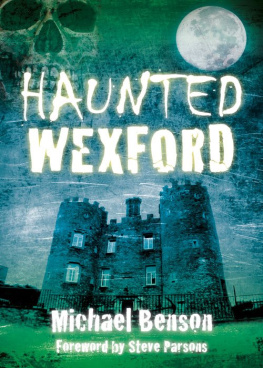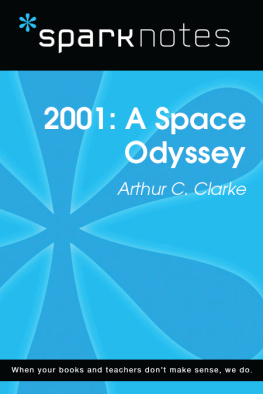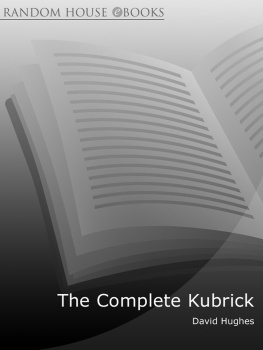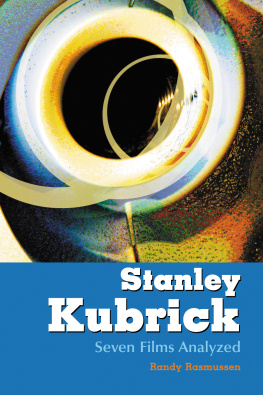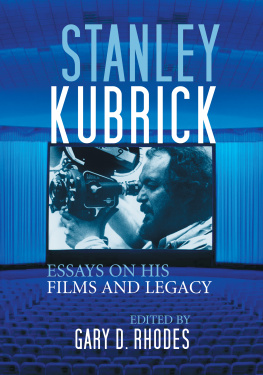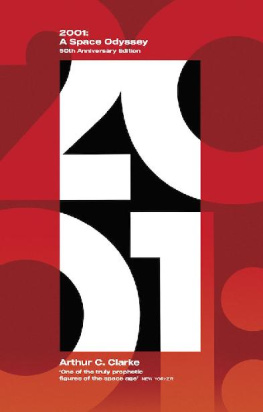Thank you for downloading this Simon & Schuster ebook.
Get a FREE ebook when you join our mailing list. Plus, get updates on new releases, deals, recommended reads, and more from Simon & Schuster. Click below to sign up and see terms and conditions.
CLICK HERE TO SIGN UP
Already a subscriber? Provide your email again so we can register this ebook and send you more of what you like to read. You will continue to receive exclusive offers in your inbox.
In memory of my father, Raymond E. Benson, November 2, 1924November 12, 2017
Politics and religion are obsolete. The time has come for science and spirituality .
VINOBA BHAVE
Quoted by Arthur C. Clarke in his keynote address to the American Astronautical Societys fifth Robert Goddard Memorial Symposium in Greenbelt, Maryland, on March 14, 1967. Clarke erroneously attributed the statement to Indian prime minister Jawaharlal Nehru, who frequently quoted Bhave. The last sentence was underlined by Stanley Kubrick in his copy of Clarkes address.
MAJOR CHARACTERS
IN ORDER OF APPEARANCE
Stanley Kubrickfilm director and producer
Arthur C. Clarkefuturist, science fiction writer, essayist
Christiane Kubrickartist, actress, Stanleys wife
Carl Saganastronomer, planetary scientist; later, best-selling author
Mike WilsonClarkes partner in the 1950s and 1960s
Roger Caraspublicist, VP of Stanley Kubricks two companies, Hawk Films and Polaris Productions; later, a leading animal rights advocate
Scott MeredithClarkes New York literary agent
Hector EkanayakeClarkes assistant and later, business partner
Ray LovejoyKubricks assistant, lead film editor
William Sylvesteractor, played presidential science advisor Heywood Floyd
Con Pedersonvisual effects supervisor
Doug Trumbullvisual effects supervisor
Robert Gaffneycinematographer, advisor to Kubrick, did second- unit aerial shots
Louis BlauKubricks Los Angeles lawyer and close associate
Wally Gentlemaninitial director of visual effects
Douglas RainCanadian actor, voice of HAL-9000 computer
Fred Ordwaytechnical and scientific consultant
Harry Langegraphic artist and production designer
Robert OBrienMGM president and CEO
Keir Dulleaactor, played mission commander Dave Bowman
Gary Lockwoodactor, played second-in-command Frank Poole
Victor Lyndonassociate producer
Tony Masterslead production designer
Bob Cartwrightinitial set decorator
Tony Frewinassistant to the director
Ernie Archerproduction designer, assistant to Masters
Wally Veeversvisual effects supervisor
Brian Johnsonspecial effects assistant
Robert Beattyactor, played lunar base commander Ralph Halvorsen
Geoffrey Unsworthdirector of photography
Derek Cracknellfirst assistant director
Kelvin Pikecamera operator
David de Wildefirst assistant film editor
John Alcottassistant to Unsworth, director of photography for Dawn of Man sequence
Bryan Loftusspecial photographic effects
Andrew Birkinassistant to the director
Stuart Freebornmakeup artist
Dan Richtermime, played lead man-ape, Moonwatcher
Bill Westonstuntman
Tom Howardvisual effects supervisor
Pierre Boulatstill photographer, desert landscapes for Dawn of Man sequence
Colin Cantwellspecial photographic effects
Jan HarlanKubricks brother-in-law and informal music advisor
CHAPTER ONE
PROLOGUE: THE ODYSSEY
The very meaninglessness of life forces man to create his own meanings.
STANLEY KUBRICK
T he twentieth century produced two great latter-day iterations of Homers Odyssey . The first was James Joyces Ulysses , which collapsed Odysseuss decade of wandering down to a single city, Dublin, and a seemingly arbitrary day, June 16, 1904. In Ulysses , the role of Ithacas wily king was played by a commoner, Leopold Blooma peaceable Jewish cuckold with an uncommonly fascinating inner life, one the author effectively allowed us to hear. Serialized from 1918 to 1920, it was published in full in 1922.
The other was Stanley Kubrick and Arthur C. Clarkes 2001: A Space Odyssey , in which the islands of the southeastern Mediterranean became the solar systems planets and moons, and the wine-dark sea the airless void of interplanetary, interstellar, and even intergalactic space.
Shot in large-format panoramic 65-millimeter negative and initially projected on giant, curving Cinerama screens in specially modified theaters, 2001 premiered in Washington, DC, on April 2, 1968, and in New York City the following day. Produced and directed by Kubrick and conceived in collaboration with Clarke, one of the leading authors of science fictions golden age, the film was initially 161 minutes long. Following a disastrous series of preview and premiere screenings, the director cut it down to a leaner 142 minutes.
Where Joyces strategy had been to transform Odysseus into a benevolently meditative cosmopolitan flaneur, and to reduce ten years of close calls and escape artistry to twenty-four hours in proximity of the River Liffey, Kubrick and Clarke took the opposite approach. Deploying science as a kind of prism, which during the nineteenth and twentieth centuries entirely transformed our sense of the size and duration of the universe, they vastly expanded Homers spatiotemporal parameters. 2001: A Space Odyssey encompassed four million years of human evolution, from prehuman Australopithecine man-apes struggling to survive in southern Africa, through to twenty-first-century space-faring Homo sapiens, then on to the death and rebirth of their Odysseus astronaut, Dave Bowman, as an eerily posthuman Star Child. In the final scene, the weightless fetus returns to Earth as Richard Strausss 1896 composition Thus Spoke Zarathustra pounds cathartically on the soundtrack.
In 2001: A Space Odyssey , the meddlesome gods of the ancients have become an inscrutable, prying alien super-race. Never seen directly, they swoop down periodically from their galactic Olympus to intervene in human affairs. The instrument of their power, a rectangular black monolith, appears at key turning points in human destiny. First seen among starving man-apes in a parched African landscape at the Dawn of Man, 2001 s totemic extraterrestrial artifact engenders the idea among our distant ancestors of using weaponized bones to harvest the animal protein grazing plentifully all around them. This prompting toward tool use implicitly channels the species toward survival, successand, eventually, technologically mediated global domination.
After vaulting into that happy future in a match cut that has deservedly acquired the reputation of being the single most astonishing transition in cinematic history, 2001 leads us to understand that a lunar survey team has discovered another monolith, this one seemingly deliberately buried under the surface of the Moon eons before. When excavated and hit by sunlight for the first time in millions of years, it fires a powerful radio pulse in the direction of Jupiterevidently a signal, warning its makers that a species capable of space travel has arisen on Earth. A giant spacecraft, Discovery , is sent to investigate.
While parallels with The Odyssey arent as thoroughly woven into the structure of 2001 as they are in Ulysses , they certainly exist. Seemingly prodded into action by flawed programming, a cyclopean supercomputer named HAL-9000represented by an ultracalm disembodied voice and a network of individual glowing eyes positioned throughout Discovery goes bad and kills off most of the crew. The sole surviving astronaut, mission commander Dave Bowman, then has to fight the computer to the death. Apart from dueling a cybernetic Cyclops, Bowmans name references Odysseus, who returns to Ithaca, strings the bow of Apollo, shoots an arrow through twelve axe shafts, and proceeds to slaughter his wifes suitors. A nostos , or homecoming, was as necessary to Kubricks and Clarkes Odyssey as it was to Homers.
Next page


